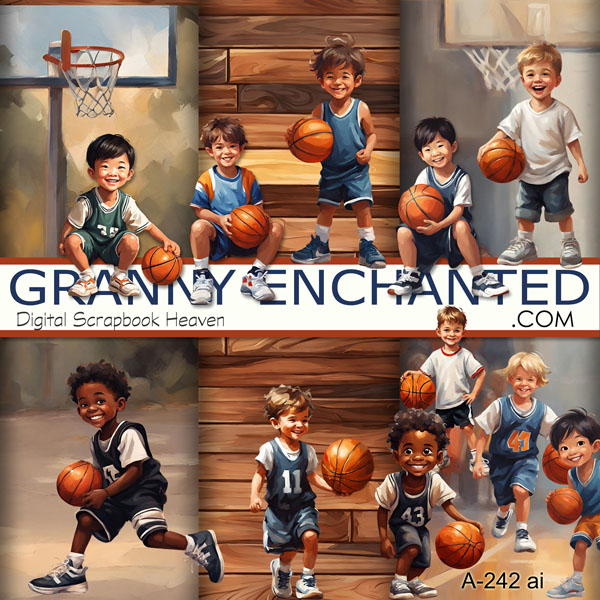iscover the charm of our “Basketball” digital scrapbook kit. It boasts three dynamic basketball-themed backgrounds. Bursting with whimsy and energy, this collection features an array of basketball clipart.
A-252 ai Bunny on Black Digital Scrapbook Kit
Introducing Granny Enchanted’s Bunny on Black digital scrapbook kit, a sophisticated blend of elegance and charm perfect for your creative ventures. Dive into a world of blue and black digital background papers adorned with captivating floral, cosmic, and cloud prints, setting the stage for endless possibilities. With an array of Easter clipart featuring delightful flower […]
A-241 ai Pink and Black Digital Scrapbook Kit
Introducing our Pink and Black Ballet digital scrapbook kit. This whimsical collection features 12 stunning background digital papers adorned with bold black and blushing pink hues, perfectly capturing the charm of little dancers. Delight in the plethora of little girl ballerinas striking adorable poses amidst stars, shoes, and a charming watercolor wash border edge. Crafted […]
A-226 a.i. Bee Border Digital Scrapbook Kit
I can always use bee prints. I come from the state of Deseret (meaning honey bee). You will see the bee and beehive symbols everywhere in Utah. To us it is a sign of cooperative industry. We’re a little bee crazy in these parts. If you could use some floral borders and/or bee clip art, […]
A-246 ai Hanbok Chibi Digital Scrapbook Mini Kit with Floral Background
Introducing “Hanbok Chibi,” a delightful digital scrapbook mini kit that captures the charm of Asia. Featuring a red, white, and blue floral background crafted in an enchanting oil painting style, this kit offers a unique blend of tradition and creativity. Adding to its allure are four adorable clay-style children dressed in traditional Hanbok clothing, infusing […]
A-234 ai Valentine Trolls Digital Scrapbook Mini Kit
Okay, I may have actually forgotten that it was Valentines day today. Luckily one of our gorgeous FB fans wished me a happy Valentines day so I realized I was missing out on wishing you a happy Valentines Day. But I’ve had a crazy, dizzy, vertigo, ugly-glasses kind of a week so this is just […]
A-230 ai Spacey Digital Scrapbook Kit
“Spacey,” the ultimate digital scrapbook kit designed to ignite imaginations and inspire little explorers on cosmic adventures. Bursting with cheer and boldness, this kit features adorable little boy and girl astronaut clipart, complete with rocket illustrations, set against vibrant cosmic backgrounds in shades of oranges and blues. Each of the four 12×12 inch, 300 dpi […]








